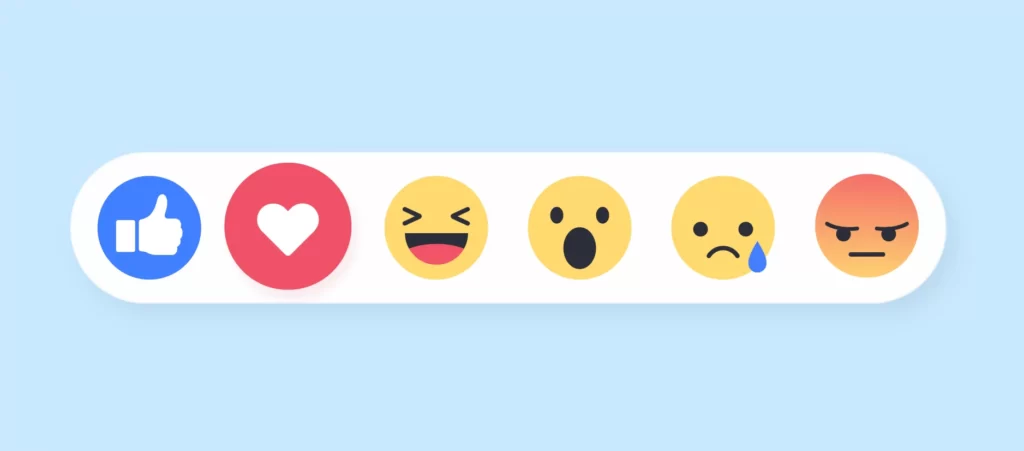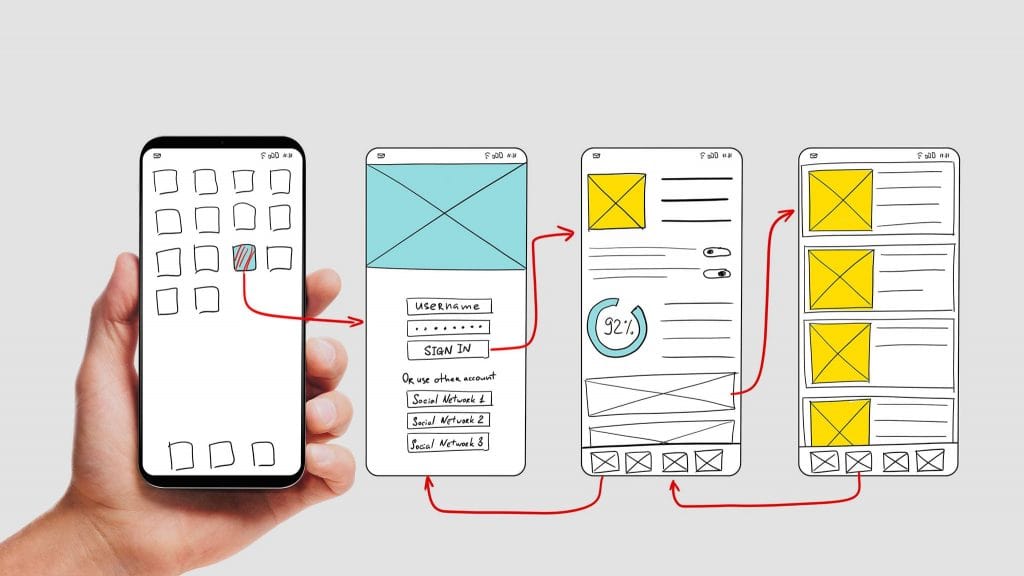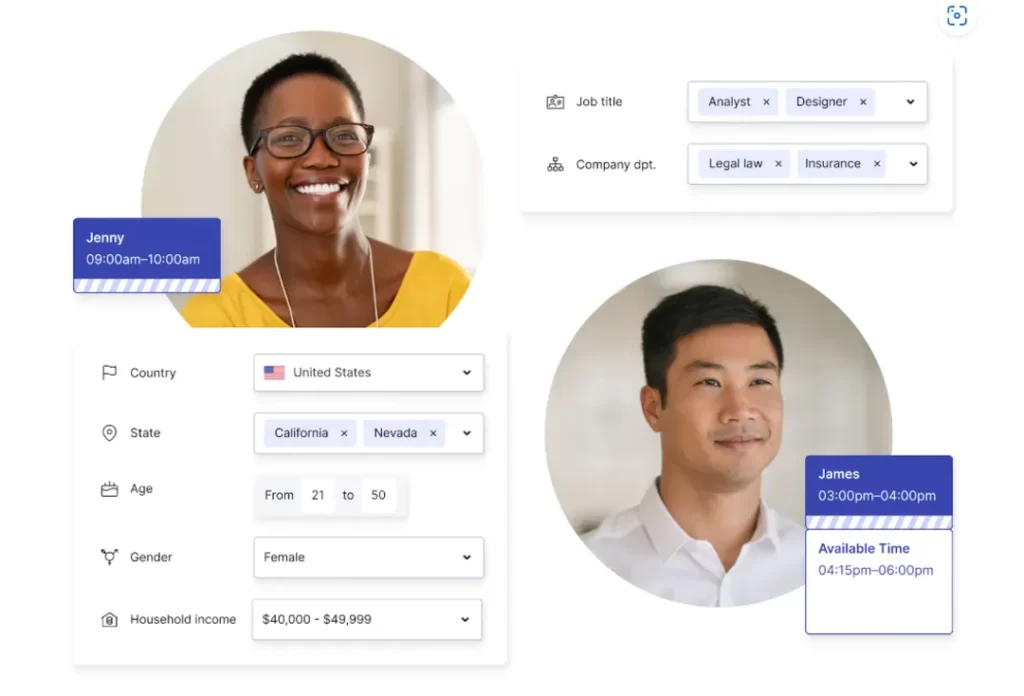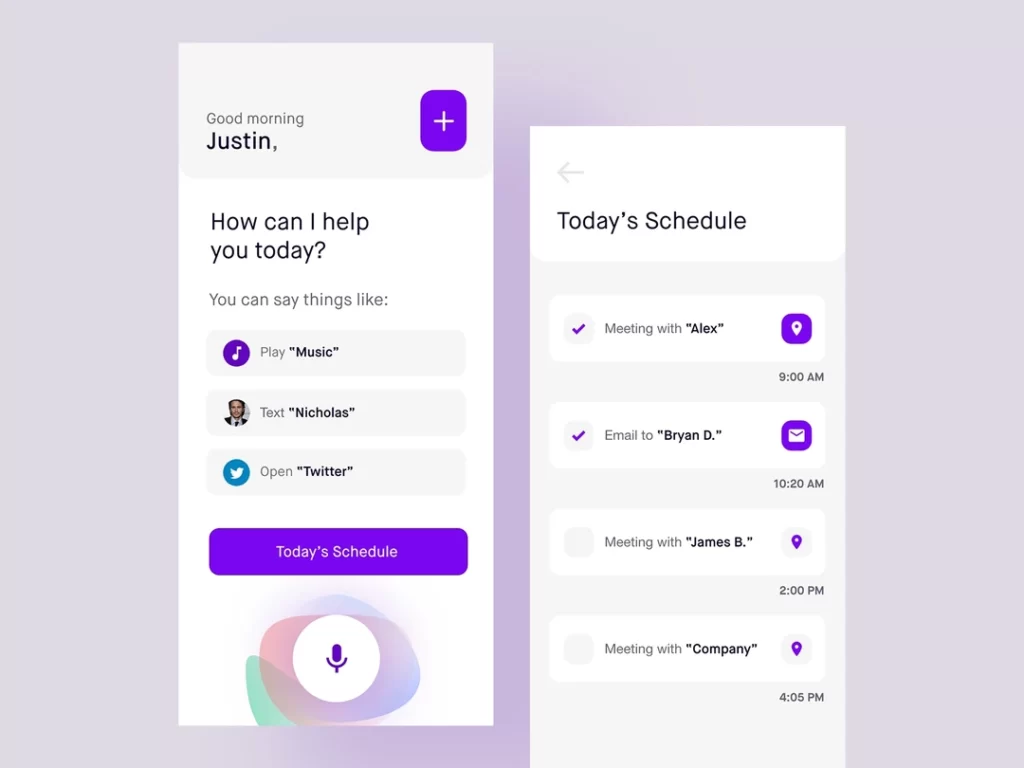Mastering Interaction Design: A Deep Dive into User Engagement
Interaction design, often abbreviated as IxD, is a discipline that designs engaging user experiences and interfaces for digital products and services. As our world becomes increasingly digitised, interaction design continues to grow in importance for businesses looking to build intuitive, satisfying customer experiences.
Table of Contents
What Exactly Is Interaction Design?

Interaction design is an expansive field covering many aspects of digital product development—interaction design centres around shaping interfaces and experiences that enable users to achieve their goals effectively and enjoyably. As technological capabilities advance, the scope of interaction design continues expanding across devices, platforms, and usage contexts.
Some key responsibilities of interaction designers include:
- Researching user behaviours, needs, motivations, and abilities
- Conceptualising interface flows, layouts, and functional elements
- Prototyping design concepts
- Evaluating and iterating designs based on user feedback
- Collaborating with cross-functional product teams
The goal is to remove friction points from the user journey, guiding people through interfaces fluidly. Excellent interaction design often goes unnoticed, enabling users to focus on their objectives rather than navigating convoluted interfaces.
Intersection of Form and Function
Interaction design merges understanding user psychology and behaviour (the science) with crafting aesthetically pleasing, brand-aligned interfaces (the art). Balancing these priorities is critical. Focusing strictly on the form can yield gorgeous yet confusing interfaces, while concentrating only on function can create usable yet ugly, disjointed experiences. Masterful interaction designers fluidly blend both empathetic and visual design principles.
Origins and Evolution
Interaction design as a recognised discipline emerged roughly 30 years ago as personal computing became more ubiquitous and graphical user interfaces (GUIs) began replacing command-line interfaces. However, many of the foundational principles can be traced back centuries.
Industrial Design Parallels
Interaction design builds upon industrial design principles developed in the early 20th century for appliances and consumer products. For instance, a central tenet of the Bauhaus design philosophy was “form follows function” – that aesthetic design should serve pragmatic needs. Similarly, interaction design places priority on understanding target users and use cases.
Graphical Interfaces
The widespread introduction of GUIs in the 1980s/1990s marked a pivotal leap forward for human-computer interaction (HCI) design. Microsoft Windows provided a common platform for graphical interfaces across third-party applications. Apple also made significant advancements for mass market consumer interactions via the 1984 Macintosh and later iPhone.
Emergence of Web Design
As internet usage grew in the mid-1990s, web design shifted to focus more on usability principles in serving diverse demographics—new specialisations were formed specifically targeting browser-based interactions across websites and applications.
Core Competencies and Concepts

Mastering interaction design requires a cross-disciplinary skillset spanning technical and creative domains and understanding user psychology. While specific day-to-day responsibilities differ significantly across companies and industries, nearly all interaction design roles leverage a standard core toolbox and mindset.
User-Centred Design Mentalities
User-centered design (UCD) philosophies anchor the interaction design field. UCD frameworks call for optimising interfaces around how real people think, behave, perceive information, and pursue needs/goals. Key techniques include:
- User research – Studying behavioural patterns, preferences, abilities, motivations, and pain points among target user personas with surveys, interviews, focus groups, usability testing, analytics tracking, etc.
- Empathy – Designing from the mindsets of archetypal users via perspective-taking exercises.
- Usability testing – Observing representative users interact with interfaces to pinpoint friction points.
- Iteration – Using direct user feedback to refine designs throughout development cycles.
UCD principles help ensure final interfaces map to user expectations and capabilities.
Conceptual Models
Conceptual models describe how users mentally categorise system components and available functions when viewing an interface for the first time. Interaction designers aim to craft intuitive interfaces matching users’ pre-existing mental models. Misalignments between user expectations and actual interface models often create initial confusion and frustration. Factors shaping user conceptual models include:
- Affordances – Interface elements subtly convey their purpose and functionality. (Ex. Buttons for clicking, scrollbars for scrolling)
- Metaphors – Relating digital functions to analogous physical entities users already understand. (Ex. Shopping carts and folders)
- Visibility – Surfacing frequently used functions in prominent, accessible locations. (Ex. a search bar)
- Consistency – Using uniform interactive patterns across contexts when appropriate.
- Standards – Leveraging widespread interface conventions users are most likely already familiar with.
Aligning to entrenched user conceptual models streamlines initial learning curves.
Interaction Design Processes
IxD practitioners collaborate closely with stakeholders across product development cycles to consistently centre the user perspective. Everyday workflow stages include:
- Requirements gathering – Working with teams to outline core user goals, necessary functions, constraints, and success metrics to shape scoping.
- Research – Investigating user behaviours and expectations around targeted problem spaces and existing solutions.
- Ideation – Brainstorming creative design concepts addressing critical use cases and opportunities.
- Prototyping – Transforming rough ideas into basic interactive models for demonstration and testing.
- Usability testing – Getting feedback from representative users on prototypes to uncover issues.
- Iteration – Using insights to refine prototypes and create new versions for re-testing.
- Implementation – Converting finalised designs into functional, production-ready interfaces with engineering teams.
This iterative, collaborative methodology allows designs grounded in accurate user data rather than internal assumptions and guesses.
Key User Experience Design Concepts

Several core design concepts form crucial pieces of the interaction design foundation. These should consistently guide decisions in bringing interfaces to life.
Affordances
As introduced earlier, affordances describe visual cues conveying how interface elements function and behave to users. Buttons for clicking, underlined links for tapping, scrollbars for scrolling, and swipe gestures on touchscreens demonstrate common affordances, providing clues about potential interactions without explicit labels.
Strong affordances reduce interaction friction and ambiguity. They build on existing user perception models.
Feedback
Feedback refers to relevant, actionable system responses following user actions. Examples include loading indicators after tapping buttons, confirmation messages upon completing forms, animation flourishes reacting to gestures, etc.
In many ways, sufficient feedback acts as conversational turn-taking in human interactions. Lack of evident system feedback often creates uncertainty around if/how interfaces are responding. Immediate, obvious feedback loops improve perceived stability and control.
Mappings
Interface mappings bind user inputs with resultant system outputs and responses through visible signifiers. Common examples include:
- Toggle switches visibly shift between binary states
- Sliders mapped to values change accordingly
- Scrolling down a page in reaction to swiping gestures
- Dragging folder icons into target drop zones
Intuitive spatial and temporal mappings between actions and reactions boost predictability. They leverage user expectations around causality in the physical world.
Critical Interface Components

Specific recurring modules form the backbone of nearly all digital interfaces, from webpages to mobile apps. While specifics and priorities differ across contexts, mastery over crafting and connecting these core components is fundamental.
Page Structure and Layout
Page structure constructs the user’s environmental frame of reference as they process an interface. Layouts allocate space to distinct zones serving varying functions:
- Branding elements
- Primary content or functions
- Navigation systems
- Supplementary content
- Controls and settings
Layouts guide visual momentum to ensure users can quickly parse interfaces and complete target actions. Common practices include:
- Grouping related elements spatially
- Utilising negative space for focus
- Establishing visual hierarchies via size, colour, contrast, positioning, etc.
Structured wireframes form the architectural blueprints in interaction design processes. They coordinate higher-level page sections and components.

This basic wireframe outlines standard webpage zones and relative positioning.
Navigation Design
Navigation systems enable users to browse interfaces efficiently while retaining context and a sense of place. Navigation mechanisms include:
- Links and sitemaps directing traffic across a network of pages
- Search boxes to scan content indexes without predefined paths
- Categories, tags, folders, or tabs organising content subsets
- Breadcrumb trails displaying historical trails to present locations
- Paging for segmented content access
- Dropdown menus for consolidated access
Navigation should adapt patterns that are recognisable for particular platforms and media. It balances simplicity for new users against flexibility for power users.
Content Structure
Content on page and section levels requires purposeful storytelling structures optimised for the medium. Web writing differs dramatically from magazine layouts or videos.
Best practices for interactive content include:
- Scannability – Clear headings, short paragraphs, keyword emphasis tailored for skimming
- Actionability – Explicit calls-to-action and next steps for seamless conversion funnelling
- Conversational tone – Direct, succinct language with engaging narrative techniques
- Responsive formatting – Dynamic display recalibrating across viewports and devices
Modular, digestible content improves retention and reduces cognitive load. Structuring frameworks like atomic design help tame complexity in sizable systems.
Controls and Input Elements
Controls and input elements collect or direct user-supplied data:
- Text Fields – Enable typing inputs
- Drop-down Menus – Allow single selection from pre-defined options
- Sliders – Provide graphical controls over numeric variables
- Radio Buttons – Offer a multiple-choice selection
- Checkboxes – Toggle binary states for turning discrete options on/off
Each input variety surfaces unique affordances and interaction constraints. Some key guiding principles span types:
- Intuitive spatial mappings to expected outcomes
- Clear labelling explaining purposes
- Evident validation upon submission
- Forgiving error handling if problems arise
- Standardise and minimise custom variants
Innovative input restrictions and suggestions (like masking patterns or recommended values) aid completion. Optional versus required questions should be indicated upfront.
Critical Skills for Interaction Designers

Interaction designers wear many hats due to their broad reach across analysis, ideation, prototyping, and technical build-out. Blending soft skills for collaborating with cross-functional teams and hard skills for wireframing tactile interfaces is imperative.
User Research
All great product experiences start with understanding target users' circumstances, capabilities, objectives, and pain points. Interaction designers must adeptly employ empirical research approaches, including:
- Surveys soliciting user feedback at scale
- Interviews enabling deep profiling and perspective gathering
- Focus groups for open idea exchange
- Analytics decoding behavioural patterns from usage data
- Observations directly shadowing users
Distilling needs and wants into actionable insights mandates deductive critical thinking and analytics. What users say they want, what they do, and what they need often differ.
Ideation and Conceptual Models
Interaction designers move fluidly between analytical and creative modes. After establishing research baselines around existing limitations and stakeholder goals, designers brainstorm solutions and experience enhancements:
- Envisioning new interface workflows optimised for critical tasks
- Sketching layout schematics and content maps
- Modelling complex conceptual relationships
- Storyboarding navigational narratives and transactions
Ambitious yet feasible ideas balancing various constraints push innovation. Thoughtfully framing UX proposals via data helps sell to sceptical stakeholders.
Prototyping
Interaction design solutions remain theoretical until brought to life via prototyping for active demonstration. Prototypes instantiate proposed designs at varying fidelities for sharing and testing purposes:
- Low-fidelity sketches convey rough app layouts
- Wireframes visualise interface skeletal structures
- High-fidelity mocks simulate near-real digital previews
Rapid prototyping prunes ineffective concepts quickly at the formative stage before extensive coding using tools like Figma, Framer, Invision Studio, and Adobe XD. Costly late-stage changes can be avoided.
Visual + UI Design
Properly activating conceptual models and affording intuitive controls depends heavily on strong visual design. Interaction designers pair layout and usability blueprints with sensory aesthetic optimisation:
- Typography – Selecting readable, brand-suitable font styles and hierarchy
- Color – Crafting accessible, meaningful palettes and usage conventions
- Graphics – Producing logos, icons, illustrations, photography, data visualisations
- Motion – Animating micro-interactions, loading, and layering
Skilled graphic design interpretation counteracts clinical workflows. UI kits systematise patterns for consistency.
Communication + Collaboration
Interaction designers must articulate complex ideas and rally support across stakeholders. From pitching leadership to guiding developers, influential yet diplomatic communication is vital for overcoming roadblocks. Designers wear project management hats in cross-functional feature production by:
- Securing buy-in for design direction
- Coordinate hand-offs to engineers
- Clarifying requirements and specifications
- Resolving competing priorities
Strong collaboration and emotional intelligence help interaction designers promote user advocacy organization-wide.
Careers in Interaction Design
Given rising mainstream software dependence across enterprises, demand for interaction design talent continues to outscale supply significantly. Professionals with both visual creativity and analytical rigour are scarce. Many related roles exist:
| Role | Responsibilities |
| UX Designer | Conduct user research, create workflows, prototypes, and usability tests |
| UI Designer | Transform concepts into high-fidelity compositions and visual assets |
| UX Researcher | Investigate behavioural patterns and feedback through empirical studies |
| UX Writer | Craft microcopy, instructional text, and tooltips |
| UX Engineer | Build production-ready interfaces via code |
| UX Generalist | Blend various specialities strategically |
Salaries often correlate to living costs in tech hub cities like San Francisco and Seattle. However, remote opportunities abound given digital design tooling:
A passion for improving lives and solving real problems drives top talents more than compensation.
Learning Interaction Design
Many designers enter the industry with tangential backgrounds before pivoting. Switching careers into UX is quite common through:
- Assisting friends on informal passion projects
- Signing onto nonprofit volunteer design sprints
- Enrolling in intensive UX boot camp certificate programs
- Pursuing university master's degree tracks
Both structured academic settings and experiential learning in maker communities build capabilities effectively.
Ultimately, proficiency results from substantial practice across the lifecycle – researching, ideating, designing, testing, and refining designs guided by user truths rather than assumptions. Building diverse portfolios reveals mastery.
The Future of Interaction Design

As enabling technologies continue advancing at exponential rates according to Moore’s Law, so too do opportunities to transform lives through thoughtful interaction design. The ubiquity of smartphones globally hints at possibilities on the horizon.
Rise of Voice UX and Conversational UI
Voice assistants like Siri, Alexa, and Google Assistant handle increasingly sophisticated commands. Voice UX removes traditional graphic controls, relying instead on natural language conversations. Design conventions still apply, just adapted to spoken dialogue.
Voice UX introduces new modalities beyond visual displays
Expanded Reality Platforms
Extended reality (XR) environments also render screen-based interfaces optional via:
- Virtual reality – Fully simulated 3D environments
- Augmented reality – Digital overlays on physical real-world settings
- Mixed reality – Bridging both prior modalities
New experiential interface paradigms manifest unique challenges and opportunities, expanding the arena that interaction designers can bring to life imaginations bounded only by laws of physics.
FAQs About Interaction Design
Here are answers to common questions newcomers frequently ask about interaction design:
What foundational skills are most important for becoming an interaction designer?
The ability to empathise with users, communicate ideas effectively, and creatively problem-solve takes priority over specific tooling skills. Wireframing, prototyping, and visual design tools simply operationalise those human-centred competencies.
What college degree is best for preparing for an interaction design career?
While no singular path exists, common beneficial majors include design, human-computer interaction, cognitive science, technical communications, psychology, anthropology, and media arts. Computer science also helps.
How much does an entry-level interaction designer or UX designer make?
Entry-level designers in the United States typically earn between $50,000 and $90,000 in starting salaries based on variables like location and company industry. With 5+ years of experience under their belts, senior designers average closer to $140,000 annually.
What should an interaction design or UX-focused portfolio include?
Portfolios showcase both comprehensions of strategic design processes and tactical-making abilities. Strong portfolios convey research insights, conceptual thinking, interface layouts, high-fidelity visuals, style guides, project management artefacts, and user testing outcomes.
How can I start learning interaction design without enrolling in a formal program?
Numerous free or low-cost resources for self-education exist online. Start by studying theoretical concepts via Nielsen Norman Group publications, YouTube creators like the Futur, and Twitter feeds from industry veterans. Recreate existing interfaces for practice. Experiment with new ideas. Then, seek nonprofit volunteer projects for a concrete application.
Conclusion
Interaction design integrates equal parts systematic user advocacy with engrossing creative expression. Balancing empathy, analytics, technology, and artistry, interaction designers sculpt experiences that empower and delight.
Masterful execution weaves dozens of minute interface details into effortless, empowering user journeys. Friction dissolves to alignment with internal mental models. Products transform into supportive partners through microconversation.
With increasing complexity across operating systems, devices, and usage contexts, opportunities to guide people to their goals grow exponentially. Specialised interaction design skills continue to be appreciated as digital experiences supersede static mediums.
Careers progressing from early execution roles up through strategic leadership see designers evolving into experienced directors. They help set long-term product visions, balancing business objectives with user needs analysis.
Few fields prove more rewarding for those energised by fusing analytics, emotions, and engineering to forge helpful products. The future remains unwritten – why not help write it? Anybody can start learning the fundamentals and experimenting with ideas today right away. The only limits are one's imagination and dedication to craft.
